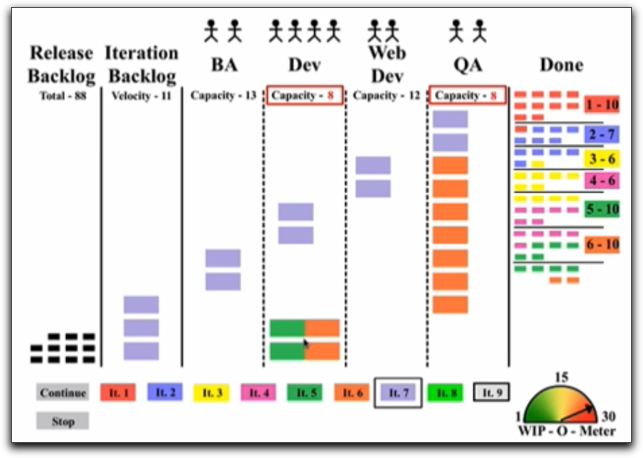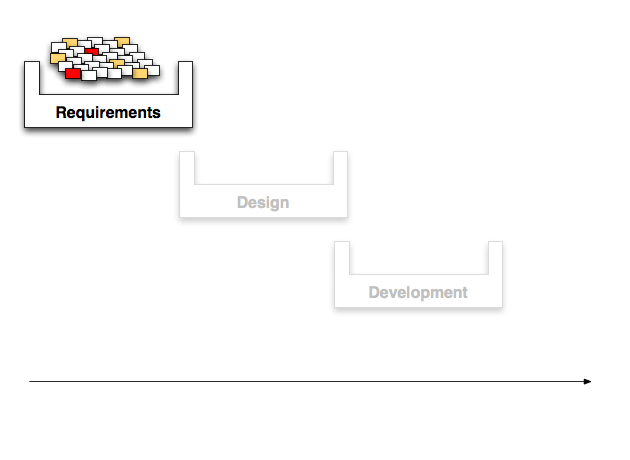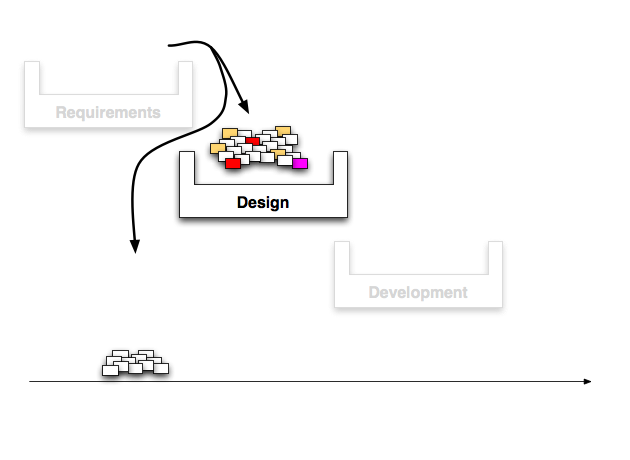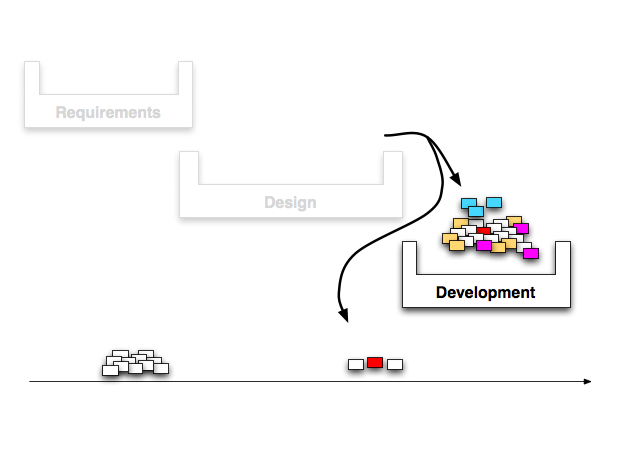Paul Hammant's Blog:
Theory of Constraints and Agile
Tom Looy (ex ThoughtWorker) did a great presentation at Agile 2009 on the Theory of Constraints and its applicability to Agile projects. Agile project managers are comfy with the principals, but Tom’s presentation explains it all again for the layman. Luckily for folks that were not there, Tom has made it available on vimeo (1.5 hours cut down to 30 mins). Here is one of the key screenshots:

I’ve always loved this stuff, and it needs to creep more in to the world of Software development more. Whereas the Agile industry has presenters and educators galore on this topic, the visuals need working on I think. While Clarke Ching , Robin Gibson , Richard Durnall , Jason Yip , Ross Pettit (three are ThoughtWorkers, one is Ex, and one is a friend-of TW) have directly or indirectly published/presented on the Theory of Constraints and its applicability to Agile, I can’t help but thing that Tom’s Flash game/demo is an incremental step forward for the visuals. It is the game-like nature to it, and the cards flying left to right on a Story wall to illustrate Work in progress (WIP) that appeals to me most. It really drives home the cost of the WIP concept. Now here is a question - work in progress compounds cost, but how much so? I feel that such compounding can potentially increase your total costs ten-fold if you were doing worst-practice development. It might be that you have added in more than development fees to that cost structure, as time-to-market and goes-live-with-wrong-functionality all have cost aspects to them. Robin Gibson I think had it right when he talked of “Throughput” being the ultimate thing that Agile and Lean are trying to increase. Specifically throughput of ideas to production and a positive effect on the profit and loss statement for a company.
What I want to see next is the same visual ideas applied to Waterfall. That would be a stack of requirements being worked on..

Requirements gathering is a joyful period where the business gets to do blue sky thinking on what they want from the new app. While some of the requirements were completely bogus (colored red), they were not spotted yet. I’m coloring them so that you can follow them as latent mistakes. Other requirements are defective as presently stated. These are colored yellow in the diagram above, and also not identified by as defects by any team member. On to design

After requirements, and a acrimonious negotiation with “the business” a set of requirements are cut because of budget. Murphy’s law has come into play and non of the bogus or defective requirements have been cut during the adversarial negotiations with the business. In this design stage, one items was recognized as defective and pushed through a re-requirements stage (purple). On to development

Three items were cut after longer than expected design stage. Two were perfectly good (Murphy’s law again) and one was bogus (phew!). More items have been hastily added (how come nobody noted these at requirements gathering???), there’s been more re-requirements and re-design (purple).
The point is that each stage has compounding costs born from the lack of prescience of the otherwise decent team members. Re-work in development is 100 more costly that rework in requirements. Similarly, functionality that was not actually required reaching production is costly, as is making an arbitrary cut of features that the business may actually want but cannot afford until phase 2 (in 18 months time).
I’ll spare you the following waterfall stages. You have already guessed that each stage will length and be full of increasingly costly mistakes. People will be fired at the end. A decent percentage quit without prompting long before the end. Top level management will judge the whole thing a failure and heap more managers and more process onto the rewrite just to make sure this type of thing never happens again!
In summary Waterfall is about the needs of the business being decimated at various negotiation points and assaulted over a lengthening timescale as latent defects are compounded while very occasionally being spotted during the flow, with everyone going from youthful and optimistic to gray/bald and burned out along the way.
So can someone from the Lean/Agile community watch Tom’s videos and go to the next graphical stage? Take it from it’s beautiful portrayal of Agile and ToC, up a to a 1000ft level where it speaks to Waterfall versus Agile and is pitched at buyers. Thanks! I apologize if this already exists, the internet is a big place you know…
PS - ThoughtWorks’ staff were at Agile 2009 in force and made many presentations. Check out our Agile 2009 page.